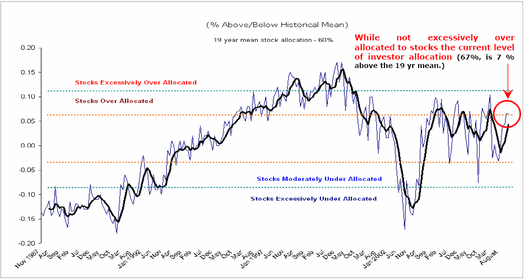AAII The American Association of Individual Investors
Post on: 30 Июнь, 2015 No Comment

The question every investor wants to know is:
How well am I doing?
Although some people are satisfied simply watching the dollars grow, most investors want that translated into a performance figure.
Bragging rights aside, there is good reason to determine your own portfolios performance: Measuring the performance of your total portfolio is useful to see if the long-term terminal value that you hope to achieve with your investment program is realistic.
In general, you should be examining the return on your portfolio to make sure it is within the target range you expected, based on the investment mix you have settled upon. If it isnt, you may need to make some adjustments, switching out of underperforming (relative to peers) segments of your portfolio, or you may need to make changes in your future projectionsfor instance, you may have to increase your savings rate, you may have to take on more risk to achieve the target that you set, or you may simply have to adjust your target value downward, settling for less in the future.
There are two ways you can calculate the return of your portfolio; both are illustrated in Table 1. which provides an example of the calculations.
The Sum of the Parts
The first method is a sum of the individual parts: First, the return for each holding is multiplied by the percentage of the total portfolio market value that the holding represented at the beginning of the period; these weighted returns are then added together for the total portfolio return.
The information needed for this calculation method is relatively easy to obtainif you are monitoring the individual holdings in your portfolio (as you should be), this information should be right at your fingertips.
The market values for your holdings at the beginning and ending of the period are on mutual fund and brokerage account statements.
For the returns of mutual fund holdings, you can use one of the many publications that provide information on mutual fund performance, including AAIIs annual Individual Investors Guide to the Top Mutual Funds. If you are investing in stocks on your own, you can use the equations shown in the accompanying box on page 20 for your own stock portfolio return, using the beginning and ending market values for the period on your brokerage account statements. The approximation equation (described more fully in the next section) should be used if you have made additions or withdrawals to your stock portfolio. If you have not made additions or withdrawals, the return equation is your actual return rather than an approximation. Of course, if you have a computer, investment software and websites are available that can perform precise calculations.
Table 1 illustrates the sum-of-the-parts calculation. The first part of the table presents a listing of this investors total portfolio holdings during the first quarter. The market value of each holding at the start and end of the period is indicated, along with the percentage of the total portfolio that each holding represents.
The period return column indicates the return over the time period for each portfolio. For the mutual fund holdings, the returns indicated in the table are simply examples. For the individual stock portfolio, the return was calculated using the approximation method because of the net addition to the stock portfolio.
The equation labeled Return Calculation #1 shows how the portfolio return was determined:
- For each holding, the portfolio percentages at the beginning of the period were multiplied by the period returns, and
- The results for each holding were added together, providing a portfolio return for the period of 4.5%.














